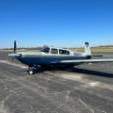Turbo leaning via EGT
-
Members Online
- Jay Bird
- Scottknoll
- T. Peterson
- AH-1 Cobra Pilot
- EricJ
- eman1200
- Peter T
- IvanP
- Alan Fox
- navysix
- PeteMc
- bigmo
- exM20K
- spistora
- Patrick Horan
- alextstone
- woodwood304
- Joe Linnebur
- MikeOH
- Aerodon
- Dwb62
- RescueMunchkin
- dkkim73
- Marc_B
- M20S Driver
- ELysek1
- kaba
- PT20J
- Glen Davis
- Nico1
- Flyler
- jamesyql
- DCarlton
- thomas1142
- ElkoRandy20J
- Meshach
- laytonl
- Jeff Uphoff
- Chaseford10
- Fly Boomer
- Crow
- Joshua Blackh4t
- 1980Mooney
- Vance Harral
- M20E for me
- raymondscott0321
- gmonnig
- MooneyMax
- cbarry


Recommended Posts
Join the conversation
You can post now and register later. If you have an account, sign in now to post with your account.